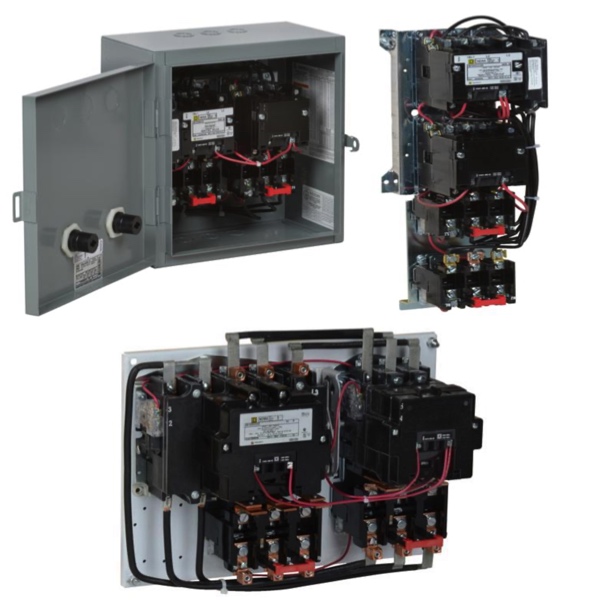NEMA Specialty Starters

Electric motors and motor controls are measured by two different standards: the National Electrical Manufacturers Association (NEMA) and the International Electrotechnical Commission (IEC).
NEMA is mostly used in North America and started out by urging manufacturers to use a standard frame size for motor control and lighting applications. Since then, it sees to it that manufacturers design components that meet safety factors and design ratings, as well as oversees the configuration and performance parameters of electrical components. IEC oversees the standards for the European electrical communities. IEC-certified components are now widely being used by companies in North America and are low cost, compact and inherently safe to the users.
NEMA motor starters can be used for a wide range of applications. It is necessary to know the voltage and horsepower of the motor when selecting the proper NEMA motor starter.
Motor Control Basics
Motor control allows operational control of electrical motors in various environments.
Motor control circuits provide a safe way to operate electrical motors. Back when motor control circuits were in their infancy, it would have been common to see a simple disconnect switch that would be used to turn on and off a motor. Depending on the size of the motor and how much voltage was required, operating this disconnect would have been dangerous, with a very high possibility of arcing or electrocution. Not to mention that when the disconnect was actuated, the large amount of inrush current would have damaged the motor over time.
In today's motor control circuits, there are a few common pieces of hardware.
A circuit breaker is used to protect the motor and any hardware downstream. A contactor and an overload relay are connected together and function in tandem to allow for remote and safe operation of the motor. The contactor functions much like a relay, allowing for a smaller electrical circuit to remotely close the motor contacts, starting the motor. The overload relay is designed to protect the motor in the case of a prolonged overcurrent event. These two devices are wired in series, so that if the overload relay detects an overcurrent event, the contactor will open the motor contacts, shutting off power to the motor.
The other two most common types of motor control hardware are a soft starter and a Variable Frequency Drive (VFD).
Both of these devices function in a similar way to the motor circuit with some added functions. The soft starter is designed to reduce large inrush current to the motor upon startup. This “soft starting” of the motor will prolong its life and allow for safer operation. The VFD performs the soft start functions, but also allows for speed control of the motor. This speed control is critical in many different environments and has made VFDs one of the most common and safe to use motor control circuits today.

